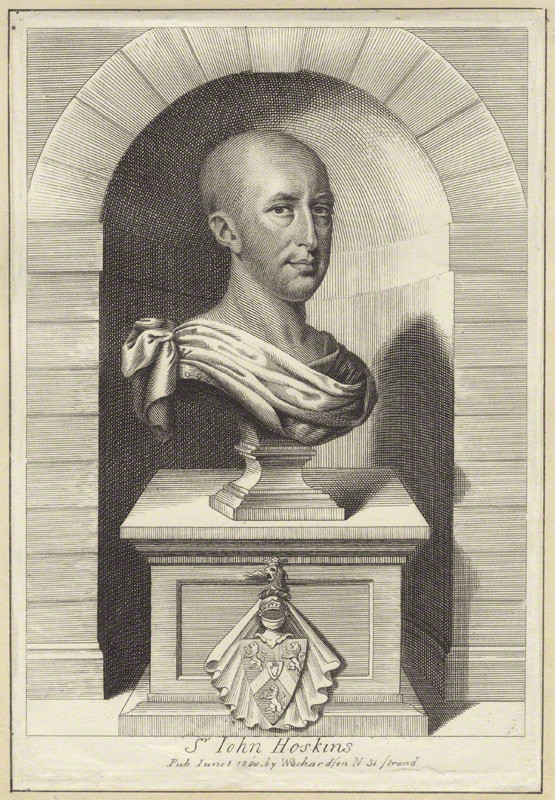Sir John Hoskyns (1634-1705)
President, Royal Society, 1682-1683
Master of Chancery
Second Baronet of Harewood, Herefordshire
Renowned for His Integrity and Eccentricity
SIR JOHN HOSKYNS F.R.S. (Wiki)
Hoskyns was elected President of the Royal Society in 1682, in succession to his friend Sir Christopher Wren. His friends included Francis North, 1st Baron Guilford, John Evelyn, and John Aubrey. Sir John was elected to parliament called on the death of Charles II for Herefordshire. He resigned the chair the following year, but from 1685 to 1687 was secretary.
Biography
Hoskyns was descended from a substantial yeoman family which in Tudor times leased the demesnes of the Herefordshire manor of Monnington-on-Wye. His grandfather John Hoskins, the eminent Jacobean lawyer and wit, sat for Hereford in three Parliaments, and incurred the wrath of James I by a reference to Scottish favourites in 1614. His father, a Presbyterian, served for the same constituency as a recruiter until Pride’s Purge and again under the Protectorate. He withdrew from public life at the Restoration, but was created a baronet in 1676.4
Hoskyns inherited the legal and intellectual tastes of his grandfather, his chief interests being ‘philosophy and experiments’. His membership of the Rota Club, with its radical political tone, was a youthful indiscretion, but he was prominent in the Royal Society. ‘One of the most hard-favoured men of his time ... his visage was not more awkward than his dress, so that, going, as his use was, on foot with his staff and an old hat over his eyes, he might be taken rather for a sorry quack than, as he was, a bright virtuoso.’ As master in Chancery, his record was ‘proof example that the office might be executed with integrity’. He helped to present a loyal address from Herefordshire approving the dissolution of Parliament in 1681, and attended a meeting of the Tory gentry at Holme Lacy in the following year. Returned unopposed for the county in 1685, he was a very active Member of James II’s Parliament. His 23 committees included the committee of elections and privileges; but the most important were to take the disbandment accounts and to consider the general naturalization of Huguenot refugees. He was also concerned with four measures of legal reform: for the suppression of clandestine marriages, the amendment of the bankruptcy laws, the establishment of a land registry and the amelioration of the condition of insolvent debtors. He was chairman of the committee to establish a water supply for Rochester and Chatham. There is no indication that he attended the turbulent second session, and he does not seem to have stood again.5
On the proposed repeal of the Test Act and Penal Laws, the Duke of Beaufort (Henry Somerset) wrote to Hoskyns that ‘his mind, I suppose, is known to the King’. He was one of the three candidates for Herefordshire approved by Sunderland in his letter of 13 July 1688, and he was retained in county office. But he was not much affected by the Revolution; he was soon restored to the lieutenancy and his rights in Ascension Island (granted in 1684) were confirmed. He died on 12 Sept. 1705 and was buried at Harewood. His younger son, the 4th baronet, sat for the county as a Whig from 1717 to 1722.6


No comments:
Post a Comment